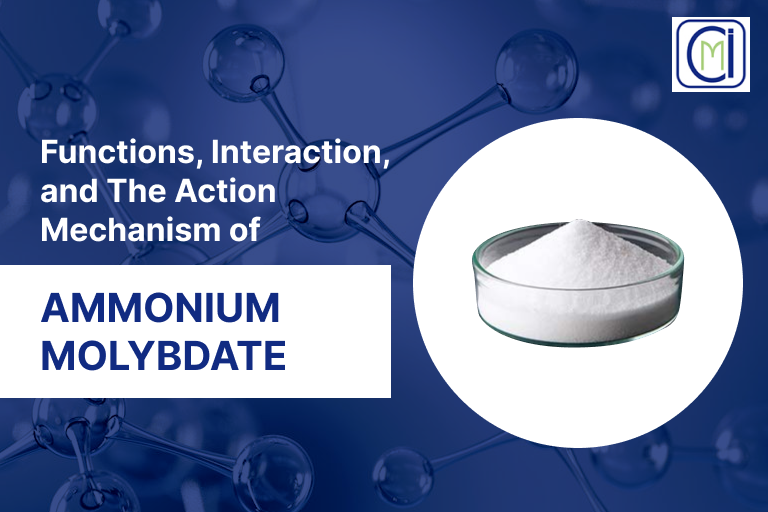
Functions, Interaction, and The Action Mechanism of Ammonium Molybdate
1. Introduction to Ammonium Molybdate
Ammonium molybdate is a white, crystalline solid with the chemical formula (NH4)2MoO4. It is an important source of molybdenum, a trace element that is essential for plants and animals.
Ammonium molybdate is used in a wide variety of applications, including fertilizers, catalysts, and pigments. It is also used in the production of molybdenum alloys and as a corrosion inhibitor.
Ammonium molybdate is an excellent chemical catalyst, often used in the oil industry. In addition, it can be used to produce agricultural fertilizer and medicine as an integral part of many enzymes.
2. Mechanism of Ammonium Molybdate
Ammonium molybdate is an inorganic compound. It is the most commonly used molybdate compound and is a white solid soluble in water.
The molybdate anion MoO4-2 is the conjugate base of molybdic acid H2MoO4. Ammonium molybdate is produced by the reaction of molybdic acid with ammonia:
H2MoO4 + 2 NH3 → (NH4)2MoO4
The molybdate anion is octahedral, and the compound adopts a layered structure similar to that of other molybdates. The layers are held together by hydrogen bonds between the amine groups and the oxygen atoms of the molybdate anion.
3. Functions of Ammonium Molybdate
Ammonium molybdate is an inorganic compound with the formula (NH4)2MoO4. It is the ammonium salt of molybdic acid. It is used as a catalyst, an oxidizing agent, and a reagent to determine molybdenum.
As a catalyst:
Ammonium molybdate is used in the production of hydrofluoric acid and the catalytic conversion of ammonia to nitric acid. It is also used as a reagent to determine metals' phosphorus and sulfur.
As a corrosion inhibitor:
Ammonium molybdate can also be used as a corrosion inhibitor. When added to water, it forms a protective film on metal surfaces that prevents corrosion. It is commonly used in boiler water systems to protect against corruption.
It is also used as a source of molybdenum in many industries and applications. Its life is one year long per packet.
4. Interaction of Ammonium Molybdate with Reagents
Ammonium molybdate can be used as a reagent to help with chemical reactions, including the precipitation of metals and the catalytic oxidation of organic compounds. This makes it a valuable reagent in a variety of chemical reactions.
This chemical can be helpful in a variety of settings and industries. Meghachem is one of the active manufacturers of ammonium molybdate.
Conclusion
We're glad you've taken the time to read this article on the importance of ammonium molybdate. Ammonium molybdate is the most crucial source of molybdenum in nature. It is a white solid found in nature in the form of iron-molybdenum ores. You can also contact ammonium molybdate suppliers in India for more details.
Frequently Asked Questions About Functions, Interaction, and The Action Mechanism of Ammonium Molybdate
Ammonium molybdate is a source of molybdenum that exists in several hydrate forms. It is intravenously administered as an additive to solutions for Total Parenteral Nutrition (TPN). Molybdenum is an essential element that is present in enzymes including xanthine oxidase, sulfite oxidase, and aldehyde oxidase.
Acidic salts, such as AMMONIUM MOLYBDATE, are generally soluble in water. The resulting solutions contain moderate concentrations of hydrogen ions and have a pH of less than 7.0. They react as acids to neutralize bases.
Nitrate is not toxic to most freshwater fish, except in high levels, and can be reduced sufficiently through periodic water changes.
